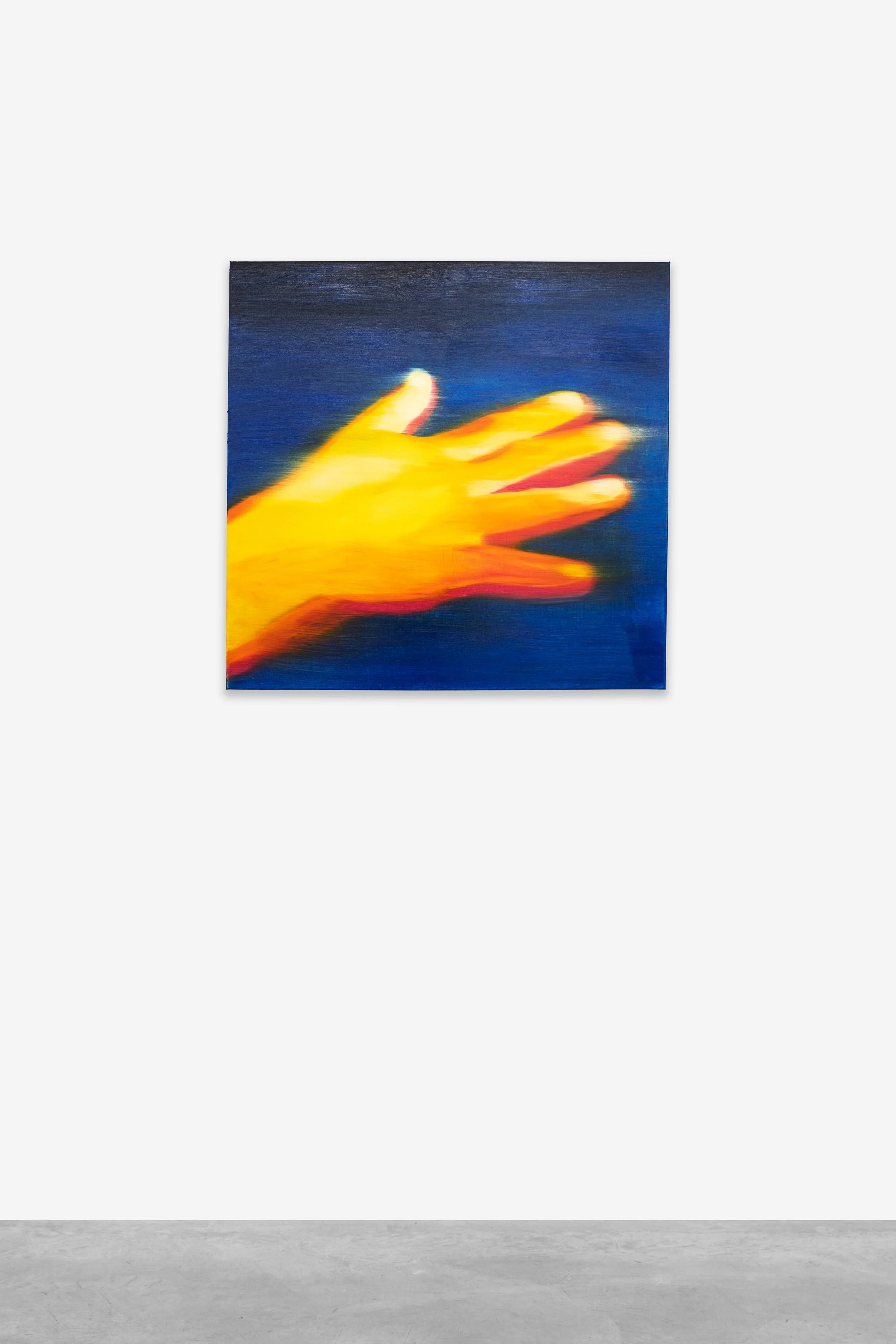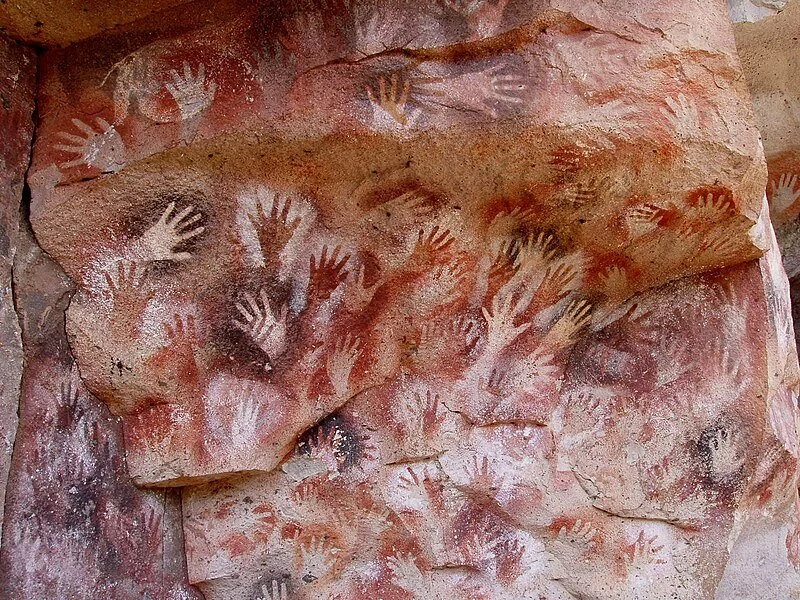Touch, 2022
Touch, 2022
Oil on linen
76 x 76 cm (30 x 30 in)
In today's world, virtual online experiences have been profoundly shaped by technological advances and the isolating realities of life during the pandemic. This shift has diminished our connection to both people and the physical world, reducing the frequency and intimacy of human touch.
Drawing inspiration from the ancient handprints in Argentina's "Cueva de las Manos" (Cave of Hands), Tan Mu references a thermographic image of a hand in her painting Touch (2022). The thermographic image, captured through technology, visually records variations in temperature, blending the human body's warmth with the cool detachment of scientific observation. As creatures inherently drawn to intimacy and personal connection, humans yearn for the tactile and the tangible. Touch captures this growing disconnection in human interaction—a byproduct of technological advancement that increasingly replaces physical exchange. Through this work, Tan Mu examines the hand as a timeless symbol of connection and creation, as well as a universal metaphor for exploring the unknown.
Q: Why did you choose a thermographic image as the basis for your painting? What significance does the temperature mapping hold for you in the context of human touch and disconnection?
Tan Mu: I chose a thermographic image because it captures the warmth of our bodies translated into colors through the lens of a machine. Each hue corresponds to a specific temperature, conveying information or acting as a translation of the sensory experience from vision to touch. Particularly during the pandemic, when so much shifted to virtual online experiences, this reduced our connection to the physical world and the warmth of touch. Even in such a technology-driven environment, we long for genuine touch, warmth, and authentic experiences.
In thermographic imaging, objects with temperature—whether living beings or inanimate matter—are captured. The color palette in the painting, with the warm yellows and oranges of the hand contrasted sharply against the deep blue background, combined with the blurred and dynamic effect, symbolizes what has been obscured and lost—connection, intimacy, and the tactile reality of life. This temperature mapping becomes a metaphor for the disconnection we experience when technology mediates so much of our interaction.
Q: What inspired you to connect the ancient handprints of the "Cueva de las Manos" with modern thermographic technology? How do you see these two forms of imagery conversing with each other?
Tan Mu: The handprints in the "Cueva de las Manos" are among the oldest human markings, created using a stencil printing technique. By placing their hands on the cave walls and blowing pigment over them, people left negative images of their hands, preserving a memory of touch that time cannot erase. To me, these handprints symbolize a fundamental and timeless human desire: to leave a mark, to connect with the world and with others.
In contrast, thermographic technology represents the present—a tool that transforms the warmth of our bodies into visualized digital images. By linking these two forms, I wanted to highlight the hand as a symbol of touch and connection, which remains constant despite changes in technology and social environments. I see the conversation between these two images as a reflection on what it means to be human—our need to touch, feel, and explore—and how this meaning endures even as the ways we interact continue to evolve.
Q: What drew you to explore the hand as a symbol of connection and creation?
Tan Mu: The hand has always symbolized touch and connection. It is the part of us that interacts with and perceives the world, and even a simple handshake is one of the most fundamental forms of human physical contact. During the pandemic, when physical touch was restricted, the hand as a symbol took on a deeper meaning for me. It came to represent not only connection but also the absence of it. At the same time, the hand embodies resilience, creativity, and the transmission of knowledge. Even in isolation, it has the power to create, communicate, and leave its mark on the world.
Q: How has your personal experience of isolation during the pandemic influenced the themes and execution of this work?
Tan Mu: In March 2020, during the COVID-19 lockdown, I began painting at home. Social distancing limited physical touch, and communication shifted online. During this period, temperature became a critical indicator of illness, with technologies like temperature monitoring, thermal imaging, and AI systems detecting individual temperatures widely deployed in public spaces. This environment of isolation and disconnection prompted me to reflect on these phenomena. These reflections shaped the concept and execution of Touch. The painting’s soft, vibrant colors and blurred edges evoke a sense of something slipping away—mirroring the connections we lost during the pandemic. The pandemic itself felt like a cave; through Touch, I aimed to document and respond to this moment in history, much like the ancient markings of the Cueva de las Manos.
Cueva de las Manos, Hands, stenciled at the Cave of the Hands





